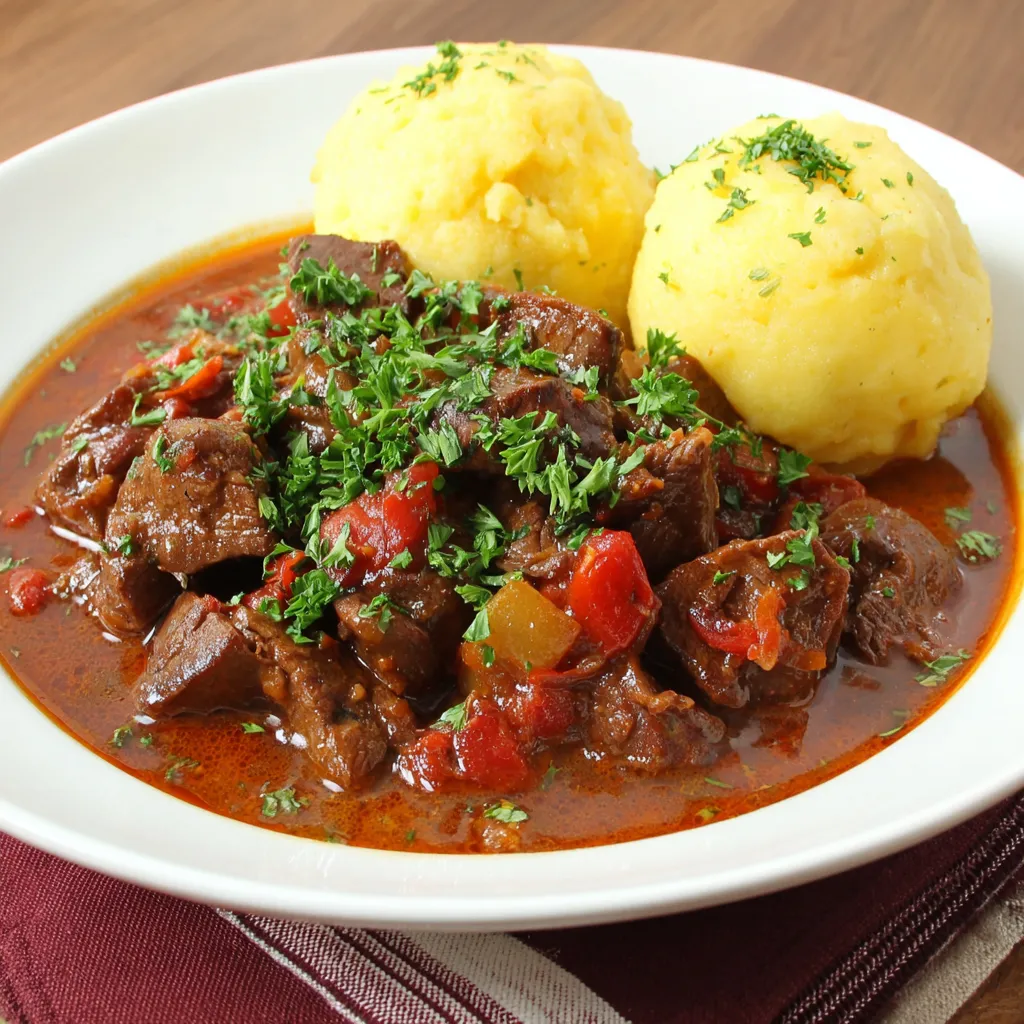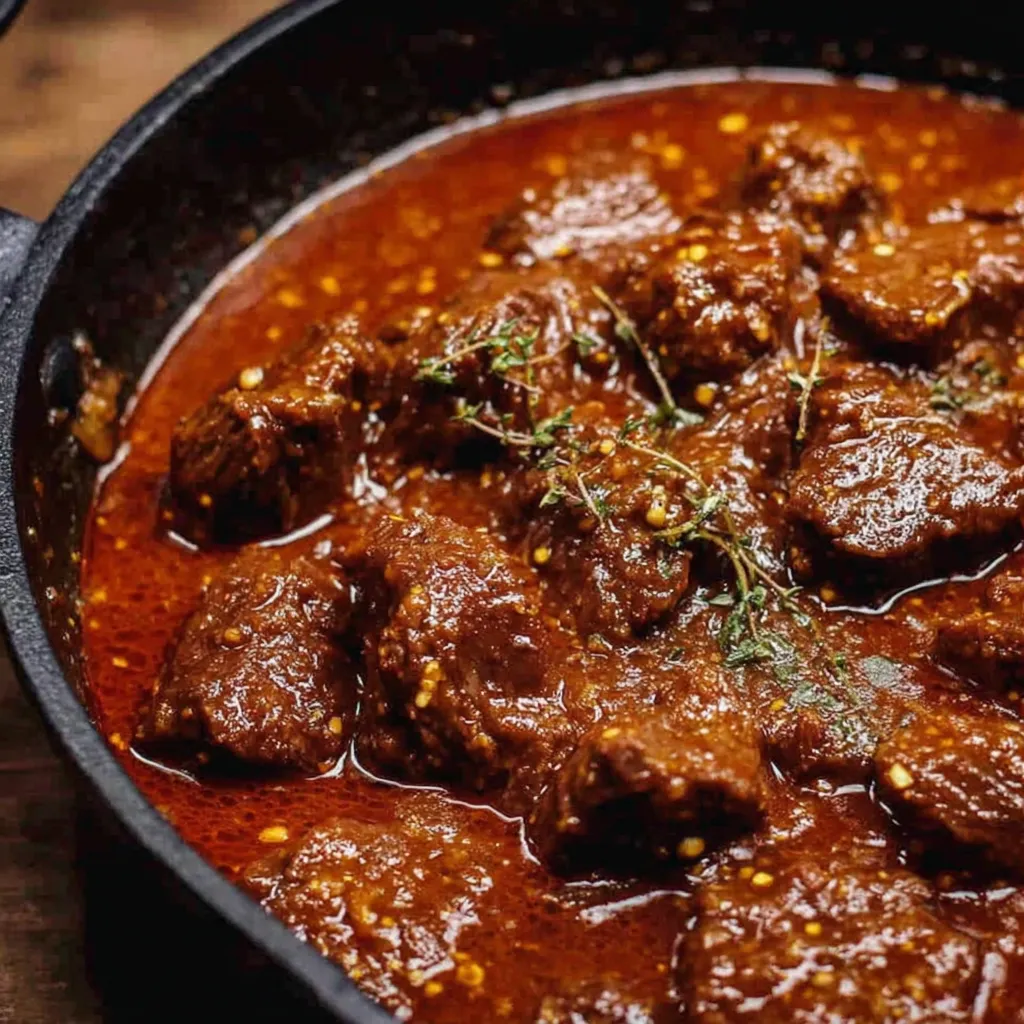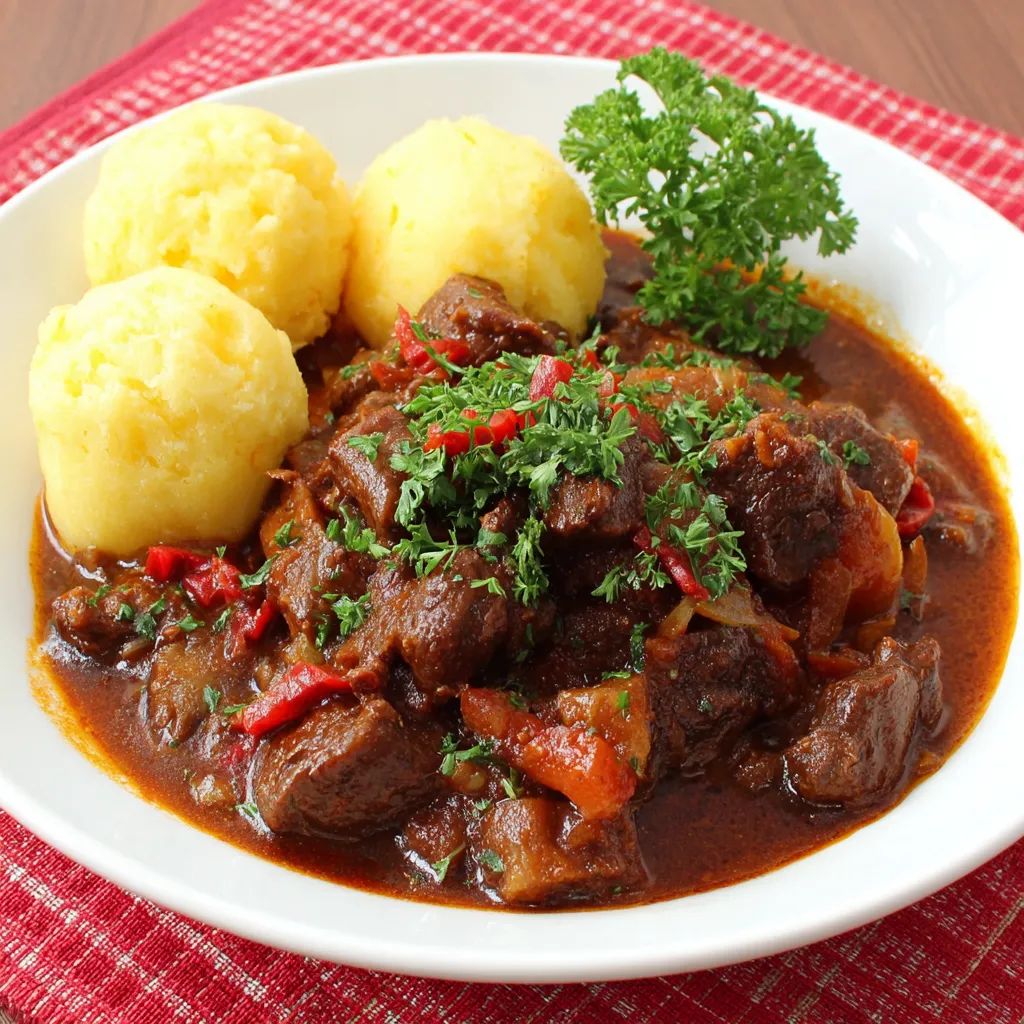 Pin it
Pin it
This cozy Viennese juicy stew is my go-to when the weather turns cold and everyone's crowding around the table. Throw a handful of honest ingredients and a slow-cooked pot together and you'll get unbeatable comfort. Rich onions, creamy pork fat, and tender beef come together for a classic Austrian home meal. Take it easy, watch those caramelized onions closely, and let everything cook gently—the payoff is totally worth it.
I made my first juicy stew on a quiet Sunday when the family squeezed around the dinner table. We've reached for it ever since anytime we crave something hearty and soul-soothing. It's now tradition to simmer up a big pot and let that mouthwatering aroma pull everyone into the kitchen.
Key ingredients and what they do
- Beef cubes: Go for shoulder cuts—they stay juicy and flavorful. Ask your butcher for nicely marbled beef.
- Onions: Use at least as many onions as meat. They make everything thick, sweet, and just right. Pick fresh, firm ones if you can.
- Mangalitza pork fat: Super creamy, adds depth—best snagged at the farmer's market or butcher.
- Vinegar: Lifts up the bright color of the paprika and adds a kick. White wine vinegar works perfectly.
- Sweet paprika: That classic red color and flavor is all about picking a great Hungarian or Spanish paprika.
- Tomato paste: For a little fruity depth—look for the thick tubed kind.
- Marjoram and caraway: Toss in fresh or whole for that old-school taste.
- Garlic: Fresh cloves only—skip the powder if you want that subtle heat and zing.
- Beef broth: Brings everything together, makes it rich and hearty. Homemade or a good glass-jar store broth works best.
- Goulash spice blend: Backs up the paprika flavors—go for a just-mixed version if you find it.
- Stekovics chili paste: Mild heat, totally adjustable for your tastebuds.
- Tomato tapenade: Optional, but adds a little fancy finish. Find it in some delis.
Step-by-step guide
- Brown those onions:
- Peel and cut onions into thin rings, then cook slowly in pork fat over medium until they're evenly light brown—about 25 minutes. Stir a lot and keep an eye on them. This step is where those amazing flavors start.
- Prep your meat:
- If your beef isn't already in cubes, slice it up into two or three centimeter chunks. Get this ready while your onions brown.
- Stir in paprika and vinegar:
- Once onions hit golden, toss in the vinegar and let it soak in. Next, add paprika and your goulash seasoning. Take the pot off the heat for a sec to keep the paprika from burning. Let that sit so all the flavors mix through.
- Add tomato paste:
- Turn the heat low, squeeze in the tomato paste. Give it a couple of minutes with gentle stirring, then splash in a little broth to loosen it.
- Make herb-garlic paste and add it:
- Smash garlic super fine with marjoram, caraway, and salt. Mix this paste deep into the onion-paprika mix along with the meat.
- Braise and simmer:
- Stir well and tuck those beef cubes in. Don't seal the pot all the way. Pour just enough broth so beef is barely covered. Let it bubble for about two hours on low, stirring in more broth as it soaks up. Slow cooking means that beef turns melt-in-your-mouth soft and the sauce thickens naturally.
- Finish and taste:
- If there's a shiny fat layer on top, you're done. Now add chili paste and tomato tapenade if you want more kick, or sprinkle in a pinch more paprika for flavor. Dig in while it's hot!
 Pin it
Pin it
I'm especially attached to the big base of onions—they make the juicy stew totally one-of-a-kind. I've lost track of how many times I stood by the stove with my mom, patiently stirring until we got that perfect browned color and deep aroma. Waiting and mixing has turned into a little family ritual that makes us all look forward to digging in.
Storage tips
The longer this stew sits, the better it gets. It holds up in the fridge for around a week if sealed up tight. Whip up a big batch and freeze individual portions for convenience. Warm it slowly and add a splash of water or broth if needed to keep things smooth and the beef juicy.
Ingredient swaps
If you can't get Mangalitza pork fat, use regular clarified butter or sunflower oil instead. For richer broth, make your own with bones and root veggies. No chili paste? Stir in a bit of chili powder for heat. Want it meat-free? Try smoked tofu and mushrooms—it gets surprisingly close to the original dish.
 Pin it
Pin it
Serving ideas
Viennese saftgulasch pairs perfectly with classic potato dumplings. Creamy mashed potatoes or just a chunk of dark bread works too. Add a spoonful of sour cream and some mild pickled veggies if you're feeling like it. Fancy it up for parties with a fried egg and sliced Vienna sausages stacked on top—it looks great and tastes even better. Total comfort food!
A bit of history
This stew started over in Hungary but was turned into a real art in Vienna. By the 1800s, juicy goulash was a superstar in the city's hearty cooking scene. The methods—like caramelizing onions in pork fat and using paprika—have been around forever. Once a working folks' meal, these days it's a festive dish for all ages.
Frequently Asked Questions
- → Wieso kommen so viele Zwiebeln ins Wiener Saftgulasch?
Viele Zwiebeln machen das Gulasch herrlich sämig und sorgen für eigenen, vollen Geschmack, auch ganz ohne Mehl.
- → Wie bleibt das Gulasch frei von bitterem Geschmack?
Brate die Zwiebeln langsam bei kleiner Hitze, bis sie goldbräunlich sind. Paprikapulver sollte nie zu heiß geraten, sonst wird’s bitter.
- → Welche Beilage passt denn besonders gut?
Semmelknödel, Kartoffelknödel oder leckeres Bauernbrot passen einfach super dazu.
- → Wie wird das Gulaschfleisch weich?
Gib dem Fleisch Zeit und schmorte es bei milder Temperatur im sämigen Sud. So bleibt es saftig und weich.
- → Schmeckt Saftgulasch aufgewärmt genauso?
Und wie! Der Geschmack wird nach dem Aufwärmen nur noch intensiver. Einfach im Kühlschrank lagern und auch zum Einfrieren geeignet.
